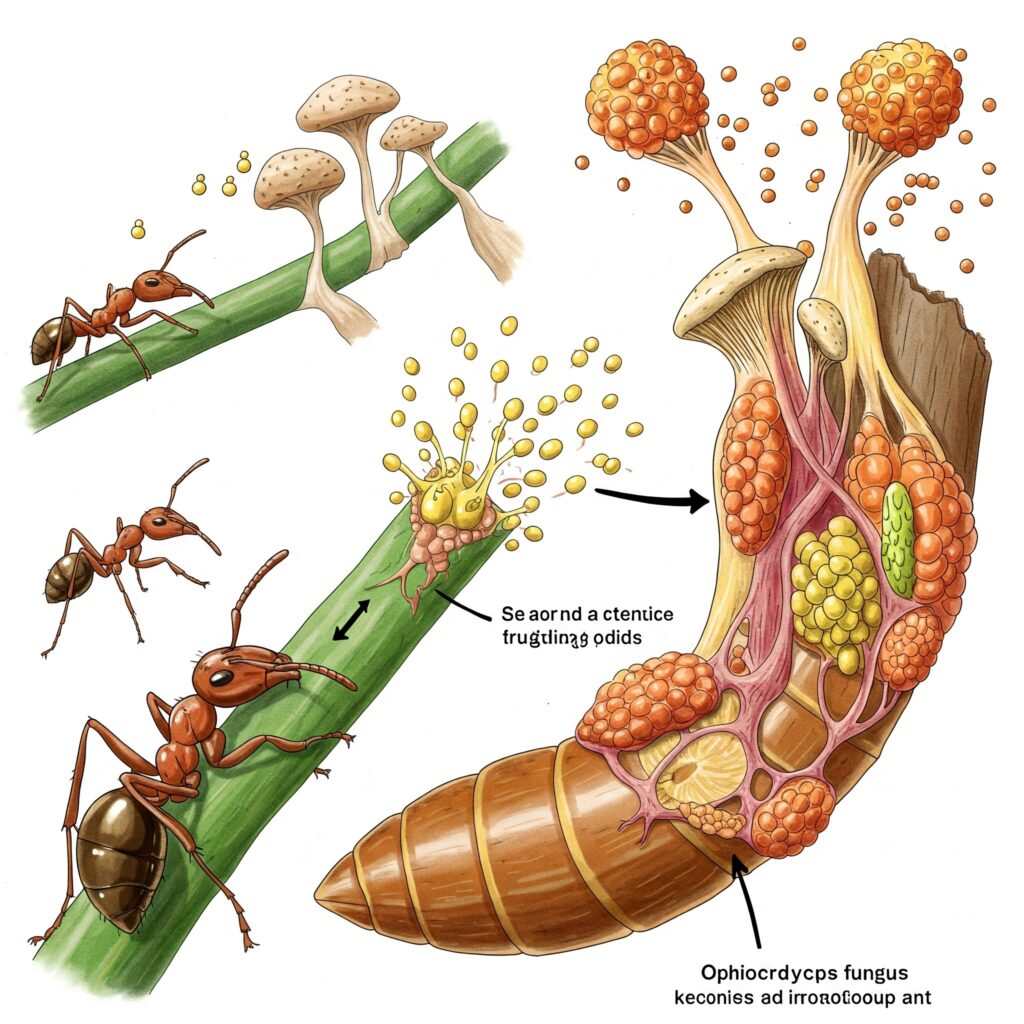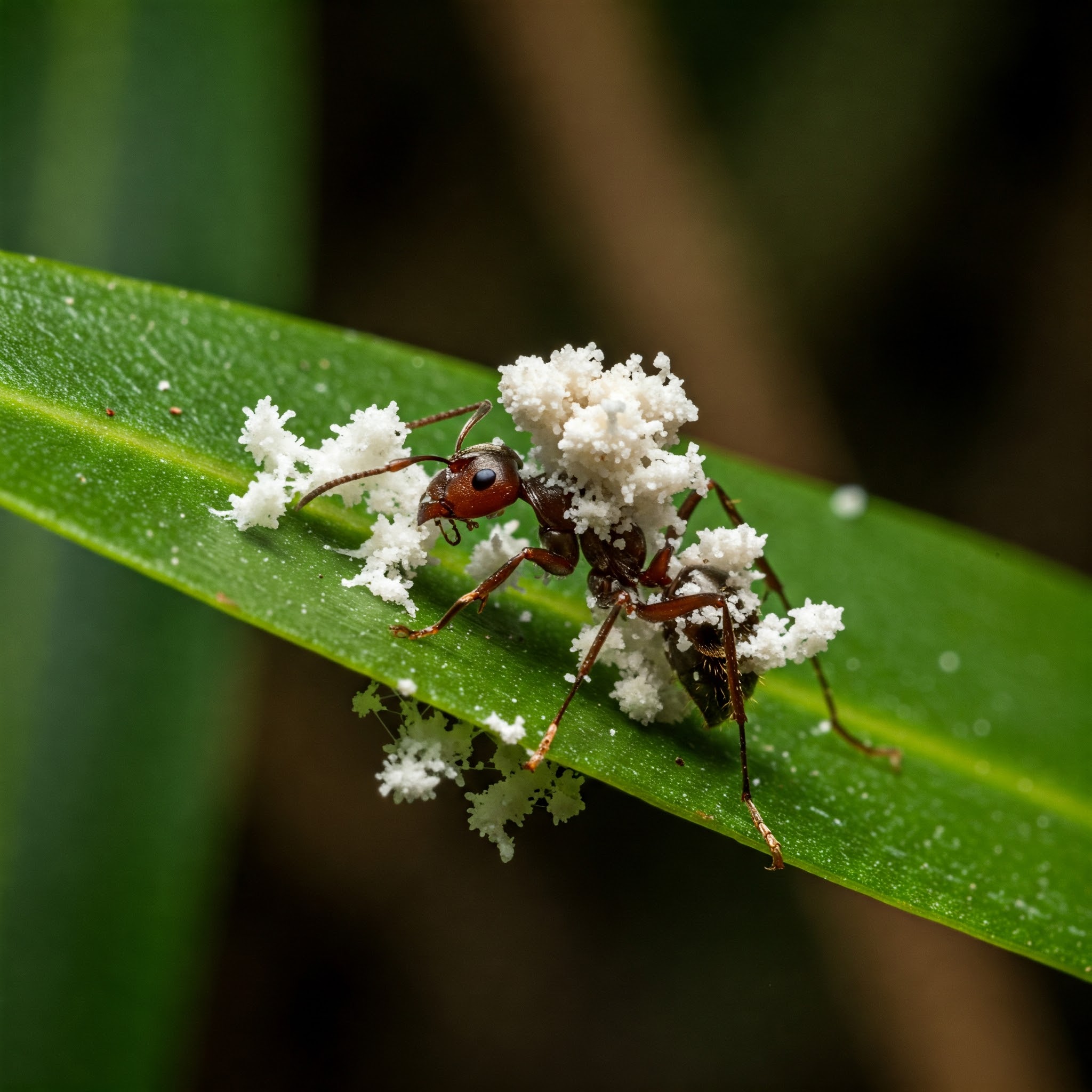Introduction
Australia, known for its diverse and often unusual wildlife, has surprised the scientific community once again. Deep in the forests of Queensland, researchers have discovered ants being controlled by a parasitic fungus, turning them into what are now called “zombie ants.” This fascinating finding highlights nature’s complexity and raises new questions about how living organisms interact and evolve. The discovery of zombie ants in Australia adds a chilling but captivating twist to the region’s already famous biodiversity.
What Are Zombie Ants in Australia?
Zombie ants in Australia are insects infected and controlled by a parasitic fungus, commonly from the genus Ophiocordyceps. Once the fungus enters an ant’s body, it slowly hijacks the ant’s central nervous system. It compels the ant to leave its colony, climb to a high place, and latch onto a leaf or twig. Eventually, the ant dies. After its death, the fungus grows out of the ant’s body and releases spores to infect others, continuing the eerie cycle. These infected ants become a tool for the fungus’s reproduction and spread.
Important Discoveries in Australia
This marks the first major case of Ophiocordyceps manipulating ants in Australia. Previously, such behavior was mostly seen in South American and Asian rainforests. Scientists from James Cook University and the Australian National University confirmed that a newly identified species of Ophiocordyceps is infecting a native Australian ant.
Researchers observed strange behavior in infected ants. They would climb to specific heights, attach themselves to leaves, and die in a position ideal for spore release. This behavior closely mirrors those observed in other regions of the world. It is a clear case of convergent evolution—where unrelated species evolve similar traits to adapt to similar environments. These eerie behaviors support the hypothesis that fungal manipulation is more globally widespread than previously thought.

Ecological and Biological Significance of Zombie Ants in Australia
The appearance of zombie ants in Australia reveals far more than a creepy natural oddity. It offers meaningful insights into:
- Biodiversity: It broadens our view of the hidden complexity in Australian ecosystems. The fungus is now part of an intricate ecological network.
- Evolution: It shows how two species—host and parasite—can evolve together in extraordinary ways, influencing each other’s survival strategies.
- Ecosystem Impact: Since ants play essential roles in many ecosystems, changes in their behavior can affect other organisms as well. This includes seed dispersal, decomposition, and soil aeration.
- Natural Pest Control: Understanding this fungus might help in creating eco-friendly pest control methods by mimicking natural biological control systems.

Futuristic Predictions: The Impact of Zombie Ants in Australia
This discovery opens exciting paths for future research and innovations:
- More Undiscovered Species: Scientists could uncover additional fungi with similar abilities. These could exist in remote parts of Australia or even urban parks.
- Neurological Insights: Studying how the fungus manipulates ants might inform brain research or inspire robotic developments. The fungus’s control of behavior could parallel mechanisms in neural signaling.
- Climate Impact: Changes in climate might expand the habitats where such fungi thrive. This could lead to more widespread occurrences of fungal manipulation in different insect species.
- Medical Possibilities: Understanding fungal control over insect behavior could offer new ways to treat neurological disorders in humans, or lead to the discovery of novel bioactive compounds.
Conclusion
The emergence of zombie ants in Australia is a compelling example of nature’s strangeness and brilliance. Far from being a mere curiosity, this fungus-ant relationship shows how organisms adapt and survive through intricate and sometimes unsettling interactions. As researchers continue to explore this phenomenon, they may uncover clues that go beyond ants and fungi—extending to entire ecosystems and even human health. The discovery marks another chapter in the fascinating and ever-evolving story of life in Australia. The phenomenon of zombie ants in Australia serves as a vivid reminder of nature’s unpredictable and astonishing adaptability.
